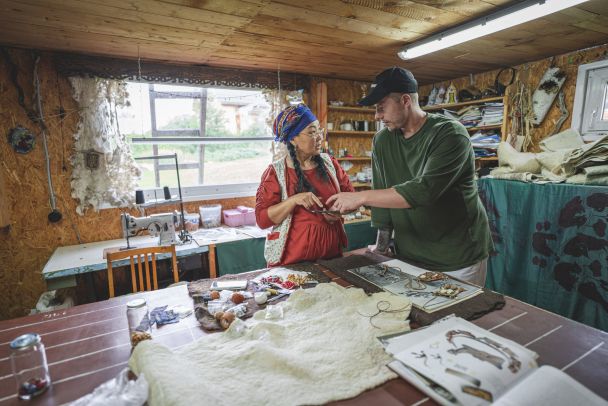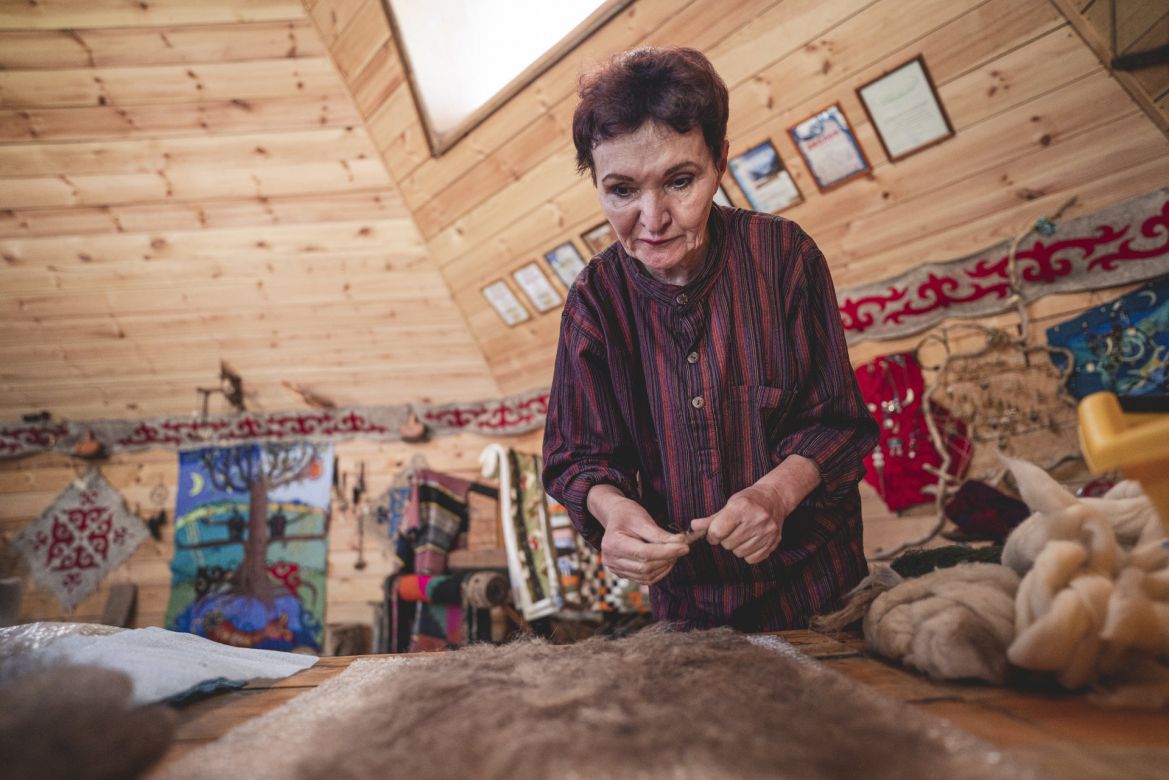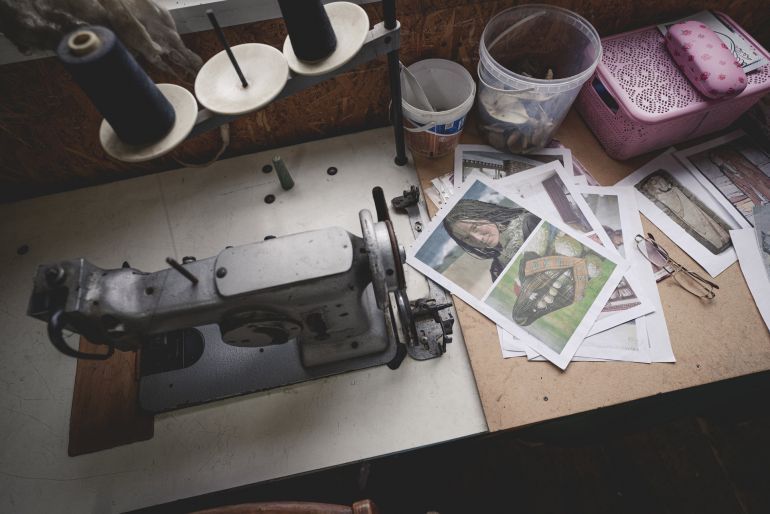Culture
Spiritual Enrichment
Here, thousand-year-old traditions are preserved and passed down with great care from generation to generation. Even with the influx of tourists in the area, the indigenous population has been in no hurry to abandon the ‘old ways’ in favour of the ‘new ways’ – instead, they continue to weave them, organically and slowly, into their authentic coordinate system.

Altai Ail
You can find a traditional Altai ail yurt nearly in every yard, next to an ordinary wooden house. For an Altai family, the ail is not a home but a form of magical protection. Its shape resembles a crystal, and every detail inside it has a specific meaning and purpose. Its crystal-like shape symbolises coming together of three worlds: the sharp part of the crystal connects the ail with the upper world (according to the Altai belief, this is the spiritual, intangible world); the hearth in the middle of the house gives warmth and protection in the middle world (in the everyday, tangible life); the lower part of the crystal connects with the lower world (where souls go after dying). A low entrance with a high threshold always faces the east so that when leaving, one could freely bow to the Sun and the Moon, and when entering – bow to the hearth that feeds and keeps warm. One must cross the threshold right foot first. The left-hand part of the ail is traditionally considered male because the first rays of the sun light it first upon opening the door in the morning. All men's things are kept in this part of the house. The right-hand side of the ail is female, as moonlight enters it first, and it is home to all women’s utensils. From the hearth to the far wall, between the male and female parts of the house, there is a sleeping area separated by a canopy, containing the parents’ bed, a cradle, and a chest with a dowry and valuables. Altai babies come into this world on a parental bed, and, therefore, this is the most protected area of the ail: its first line of defence is the hitching post outside; second – the high threshold; third – the hearth, fourth – the hitching post over the hearth; and the fifth is the canopy over the bed that protects against the evil eye.

Altai Religion
Some sources paint the Altai as pagans, but this is not entirely true; although in its essence and structure the Altai faith – Altai Jang, or Altai Law – is closest of all to paganism. It is a mixture of ancient religions: Tengrism (monotheistic worship of the eternal blue sky in the form of a sky deity), pantheism (worship of nature spirits), shamanism, Burkhanism (worship of a pantheon of deities), and ancestral cults. But at the same time, Altai Jang varies geographically. If it is the Altai Mountains we are talking about then locals likely venerate nature spirits; if it is the middle Altai – ancestral spirits; Southern Altai – both of the above. At the same time, Altai is home to representatives of two ethnographic groups: the Northern Altai and the Southern Altai. Each group is, in turn, divided into small clans (tribes), syok in Altai, and each syok has its own culture and faith.
Altai Arts and Crafts
Since the Altai people are very protective towards their ethnic identity, one can experience it here in all its diversity: from antler baths at the Yanykanovs' wapiti farm by the Oroktoy Bridge to a fascinating ethnographic tour of Synar’s ail near Artybash with homemade Altai specialities and arachka tasting; from felting and sculpting clay ocarina clay whistles in the Village of Craftsmen (Askat) to a chamber concert of ethnic music from the virtuoso of Tibetan singing bowls, topshuur and various throat singing techniques, Ayas.






 4 min
4 min